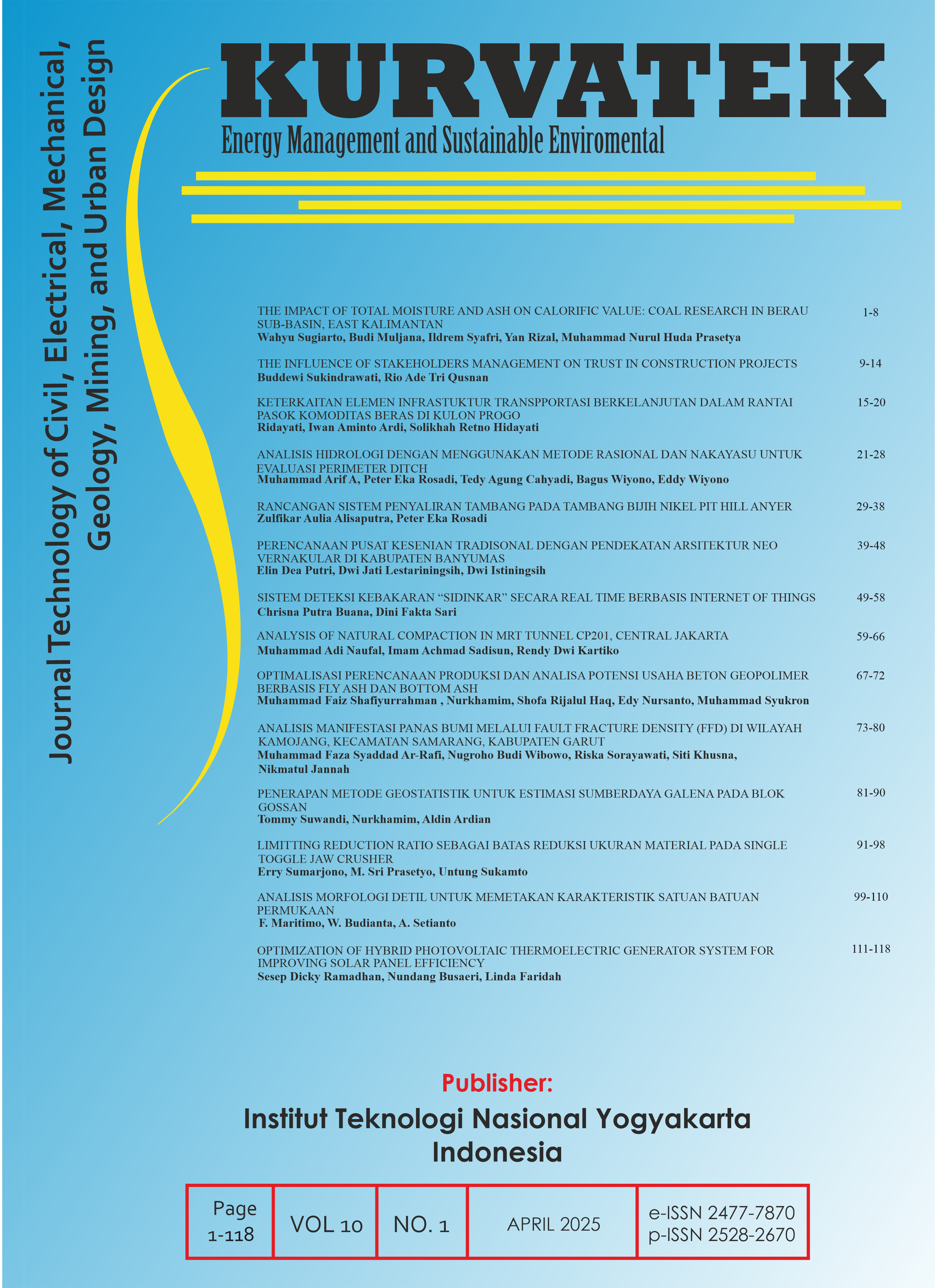SISTEM DETEKSI KEBAKARAN “SiDinKar” SECARA REAL TIME BERBASIS INTERNET OF THINGS
DOI:
https://doi.org/10.33579/krvtk.v10i1.5537Keywords:
Deteksi Dini Kebakaran, Fire Detection SystemAbstract
The Fire Detection System emerged because of the many fires in the room. Aims for early detection of room / room conditions from the possibility of fires based Internet of Things. By utilizing internet connectivity in controlling hardware : smoke sensors, fire sensors and buzzer. Displays smoke and gas values and detects the presence or absence of fire in a room and provides notifications when the displayed value exceeds certain limits by using the mobile application on the Android smartphone and buzzer at NodeMCU. This tool uses several devices to connect the process between the response from the sensor and the application. Smoke sensors and fire sensors as data retrieval from objects. NodeMCU is used as a microcontroller. Firebase is used to store temporary data and to link applications with tools. The mobile application, namely SiDinkar, is used to monitor the conditions of gas, smoke and fire in the room. Notification in mobile application is used and buzzer in NodeMCU for alerts under certain conditions. The results of the tests that have been carried out are that the tool is able to display data in the form of smoke and fire taken from Firebase by the Android Application “SiDinKar”. The data displayed on the mobile application is realtime. To access the application in order to monitor realtime requires an internet connection.
Downloads
References
T. Sutikno, W. S. Aji, and R. Susilo, “Perancangan Alat Pendeteksi Kebakaran Berdasarkan Suhu dan Asap Berbasis Mikrokontroler AT89S52”, TELKOMNIKA Telecommunication, Computing, Electronics and Control, vol. 4, no. 1, pp. 49-56, April 2006. doi: http://doi.org/10.12928/telkomnika.v4i1.1244
M. Jamil, H. Saefudin, dan S. Marasabessy, “Sistem peringatan dini kebakaran hutan menggunakan modul nodemcu dan bot telegram dengan konsep internet of things(iot)”, KOMIK (Konferensi Nasional Teknologi Informasi dan Komputer), vol. 3, no. 1, pp. 1-5, 2019. doi: https://doi.org/10.30865/komik.v3i1.1558
A. Firmansyah dan D. A. Pratama, “Perancangan Smart Parking System Berbasis Arduino Uno”, Jurnal Teknologi Pelita Bangsa, vol. 10, no. 1, pp. 1-9, 2019.
T. S. Kalengkongan, D. J. Mamahit, dan S. R. Sompie, “Rancang Bangun Alat Deteksi Kebisingan Berbasis Arduino Uno”, Jurnal Teknik Elektro dan Komputer, vol. 7, no. 2, pp. 183-188, 2018.
T. Juwariyah, S. Prayitno, dan A. Mardhiyya, “Perancangan Sistem Deteksi Dini Pencegah Kebakaran Rumah Berbasis Esp8266 dan Blynk”, Jurnal Transistor Elektro dan Informatika (TRANSISTOR EI), vol. 3, no. 2, pp. 120~126, Juni 2018. doi: http://dx.doi.org/10.30659/ei.3.2.120-126
A. Sihombing, D. Setiawan, dan M. A. Sembiring, “Implementasi IoT (Internet of Things) pada Sistem Fire and Gas Detection dengan Platform Blynk”, J. CyberTech, vol. 1, no. 12, pp. 1–12, 2018.
S. Wasista, Setiawardhana, D. A. Saraswati, and E. Susanto, Aplikasi Internet of Things (IoT) dengan Arduino dan Android, Surabaya: Politeknik Elektronika Negeri Surabaya, 2019.
M. F. Wicaksono, Aplikasi Arduino dan Sensor. Bandung: Informatika, 2019.
A. Hartono, Siswanto, and A. Widjaja, “Prototype Pendeteksi Kebakaran menggunakan Sensor Flame, Sensor DHT11 dan Mikrokontroler NodeMCU ESP8266 berbasis Website”, Seminar Nasional Mahasiswa Fakultas Teknologi Informasi (SENAFTI) Jakarta-Indonesia, pp. 734-741, 2022.
T. Ramayani, B. Kurniawan, F. Wulandari, F. Rozi, dan C. Prabowo, “Penerapan IoT (Internet of Things) untuk Pencegahan Dini Terhadap Kejahatan Begal”, Rekayasa Sistem dan Teknologi Informasi, vol. 2, no. 3, pp. 627-632, 2018.
Downloads
Published
How to Cite
Issue
Section
License
Copyright (c) 2025 Chrisna Putra Buana, Dini Fakta Sari

This work is licensed under a Creative Commons Attribution-ShareAlike 4.0 International License.
This journal provides immediate open access to its content on the principle that making research freely available to the public supports a greater global exchange of knowledge.
All articles published Open Access will be immediately and permanently free for everyone to read and download. We are continuously working with our author communities to select the best choice of license options, currently being defined for this journal as follows:
• Creative Commons Attribution-ShareAlike (CC BY-SA)

This work is licensed under a Creative Commons Attribution-ShareAlike 4.0 International License.










